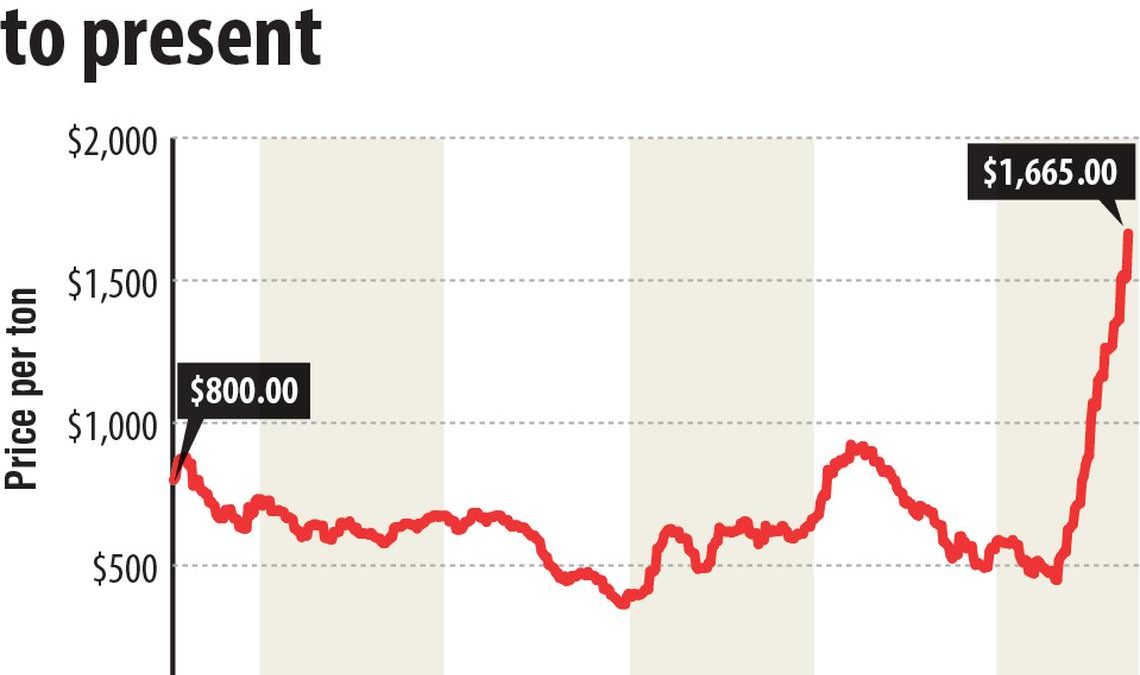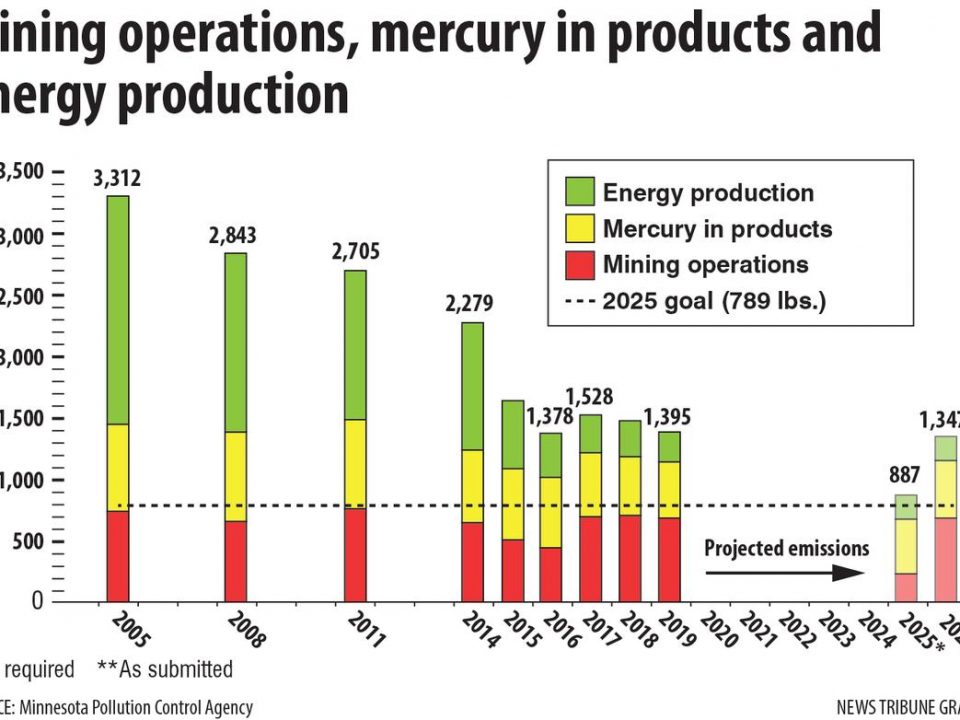
Shifts canceled at Worthington meat plant after JBS hit by cyber attack
June 1, 2021
Stocks wobble following strong report on US manufacturing
June 1, 2021The pandemic’s initial shock caused steel demand to fall, forcing companies to idle blast furnaces and the mines that supply them for several months. But even in late 2019, before words like “coronavirus” and “COVID-19” entered our lexicon, the industry was challenged by low steel prices.
But now, thanks to record-high steel prices and domestic steel production ticking back up to near pre-pandemic levels, things look good for the region’s mining industry, which mines taconite and processes it into iron ore pellets — the key ingredient for steel.
The last mine to reopen has been operating for months and the laid-off miners have been called back.
Demand for steel is high and the mining industry’s outlook looks good, said Tony Barrett, professor emeritus of economics at the College of St. Scholastica in Duluth who follows the taconite industry.
“Everything that uses steel is doing well,” Barrett said. “And doing well in a way that is reasonably sustainable.”
And that’s driving steel prices up, he said.
Futures for domestic hot-rolled coil steel surpassed $1,600 per ton last month — more than three times higher than prices during the first few months of the pandemic.
Domestic hot-rolled coil steel futures market price
For Cleveland-Cliffs and U.S. Steel — the two steel companies with iron ore mines and pellet plants on the Iron Range — it’s been welcome news.
“Right now the American consumers are consuming and they are consuming a lot. Stimulus money provided to the majority of the population is being redirected right back into the economy and that’s great for flat-rolled steel producers like Cleveland-Cliffs,” Cliffs CEO Lourenco Goncalves said in a conference call with investors announcing quarterly results.
He noted much of that spending has been on consumer goods that use lots of steel like appliances, cars and HVAC units.
Domestic raw steel production, which had fallen sharply during March and April 2020, is also near pre-pandemic levels. It’s been hovering just under 1.8 million tons of raw steel production per week, according to the American Iron and Steel Institute. During the first few months of 2020, it had been just above 1.9 million tons per week but fell to as low as 1.14 million tons per week at the beginning of May 2020.
![]()
Domestic steel production
Barrett said the industry is aided by the steel tariffs introduced by the Obama administration and reinforced by the Trump administration. Those are working and keeping cheaper foreign steel out of the U.S., he said. Consolidation of steel companies has also prevented competition from getting out of hand and causing booms and busts, Barrett said.
Companies support infrastructure bill
Building roads, bridges and other infrastructure requires a lot of steel.
That’s why the CEOs of Cliffs and U.S. Steel are appearing on business shows to advocate for the Biden administration’s infrastructure bill, which was initially introduced as costing $2 trillion over the next decade. Democrats and Republicans are nearing a deal, though it will certainly be less than the original amount, Reuters reported.
In February, U.S. Steel CEO David Burritt told Yahoo Finance that a strong infrastructure bill could account for up to 15% of the company’s business and help prolong the ongoing “super cycle.”
“In the past, typically a cycle would be six months. This could run a couple years, especially if we get the infrastructure bill in place,” Burritt said.
Infrastructure bill or not, Barrett said he’s never felt better about the economic outlook. And steel demand almost always correlates with economic growth, he said.
“I cannot come up with a negative scenario for 2021,” Barrett said. “Not just for steel, but for the economy as a whole. … I’m as optimistic as I recall being as a professional economist.”
Rebound ripple effects
The rebound in mining is reflected in shipments of iron ore on the Great lakes and from the port of Duluth-Superior, the News Tribune reported in May.
The Lake Carriers’ Association said iron ore shipment totals throughout the Great Lakes were exceeding last year’s slowdown with 5.56 million tons of ore shipped in April, up 8.2% compared to the same month last year.
And year to date, iron ore trade on the Great Lakes was at 9.45 million tons, a 15% increase compared to the same point in 2020.
![]()






